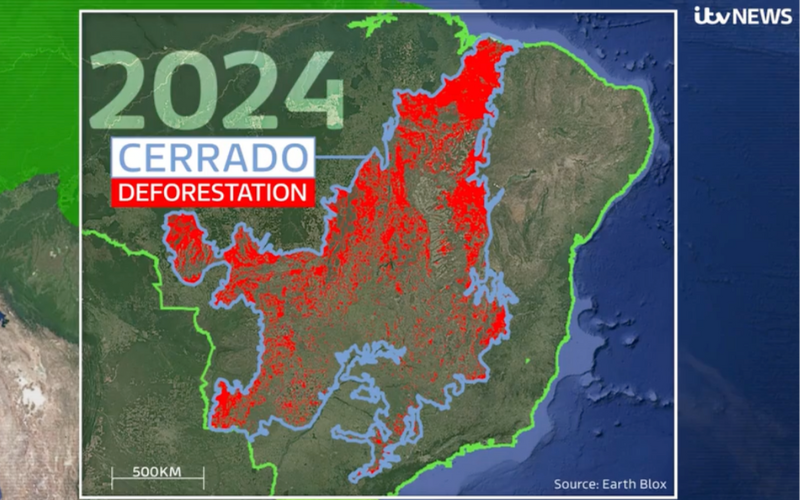The Taskforce on Nature-related Financial Disclosures (TNFD) framework provides recommendations and guidance for organisations to incorporate nature-related risks, impacts, dependencies and opportunities into financial and business decisions. It is designed to support a shift in global financial flows away from nature-negative outcomes and toward nature-positive outcomes.
Due to the challenges of locating assets and facilities in supply chains and the complexities of measuring nature (every ecosystem is diverse and requires different data), it’s not surprising that many sustainability teams are struggling with this. In our latest report, we demonstrate how to use Earth Blox to assess the biodiversity impact caused by palm oil facilities located in different countries around the world aligned to the TNFD LEAP approach. While this approach is aligned with TNFD, it can also be used in reporting for other standards like CSRD and EUDR.
The importance of nature for sustainable businesses
The TNFD framework encourages businesses and financial institutions to consider nature from the get-go, rather than as an afterthought. Importantly, it is not a regulation or law, and therefore relies on organisations adopting it voluntarily. Luckily, this appears to be the case. A TNFD survey found that 70% of organisations across 11 sectors plan to start disclosing nature metrics aligned with TNFD Recommendations by financial year 2025 or earlier.
A key thing that is often missed in climate change discussions is that employing nature or climate-positive business practices will present opportunities that will give your organisation a long-term advantage. Consider the case where you are investing in a new supply chain in South America. Water is a key resource for your business and, therefore, critical to your financial sustainability. If you ignore your impact on nature, you may get lucky and all will be OK in the short to mid-term. Have bad luck, however, and you may be on the receiving end of a long-term drought, destroying your business. Identifying healthy nature habitats and investing in nature-positive practices, such as reforestation in water catchment areas, planting more trees, recycling irrigation water, and diversifying crops/intercropping, would help prevent this.
Assessing biodiversity using the LEAP approach
So how do you assess your risk exposure? Handily, the TNFD has developed an assessment approach known as LEAP: Locate, Evaluate, Assess and Prepare to guide you through the process of identifying, quantifying and mitigating risks.

Source: Guidance on the identification and assessment of nature related issues: The LEAP approach, TNFD, Version 1.1 October 2023, Date Accessed: December 2023.
In this example, we focus on L1, L2, L3, L4, E2 and E4. These are metrics that we can assess without having internal company data. We can also measure dependency (E3), but do not in this example.
The use of satellite data in regulation reporting
Satellite data is often regarded as a silver bullet; the single solution that will ‘fix’ all of the world’s monitoring issues. Those who work in the sector know that definition couldn’t be further from the truth and that it is one of many required data sources in any viable solution. Particularly for solutions in the financial sector, where there are strict auditing requirements.
At Earth Blox, we have many world-leading experts in the use of satellite data, and we agree with the above statement. This is why you will regularly hear us talk about a convergence of evidence approach being the best way to progress. Specifically, considering multiple data sources and evaluating them independently to determine an agreed conclusion. And that is why our platform ingests many datasets, including satellite, drone, ground-truthed, proprietary and more.
Biodiversity analysis for palm oil mills
In this report we detail how the LEAP framework can be used to investigate the impact of palm oil facilities on nature.
Download the report here: TNFD: Assessing the biodiversity impact of palm oil facilities using the LEAP approach
Dr Steven Owens
Having worked with satellite data for over a decade, Steve is well versed in using data to obtain critical business insights. Prior to joining Earth Blox, he was influential in growing the Scottish space sector as part of the Scottish Centre of Excellence in Satellite Applications. He holds a master's degree in aero-mechanical engineering and a PhD in astrodynamics from Strathclyde University. Learn more about Steven here.


.png)
